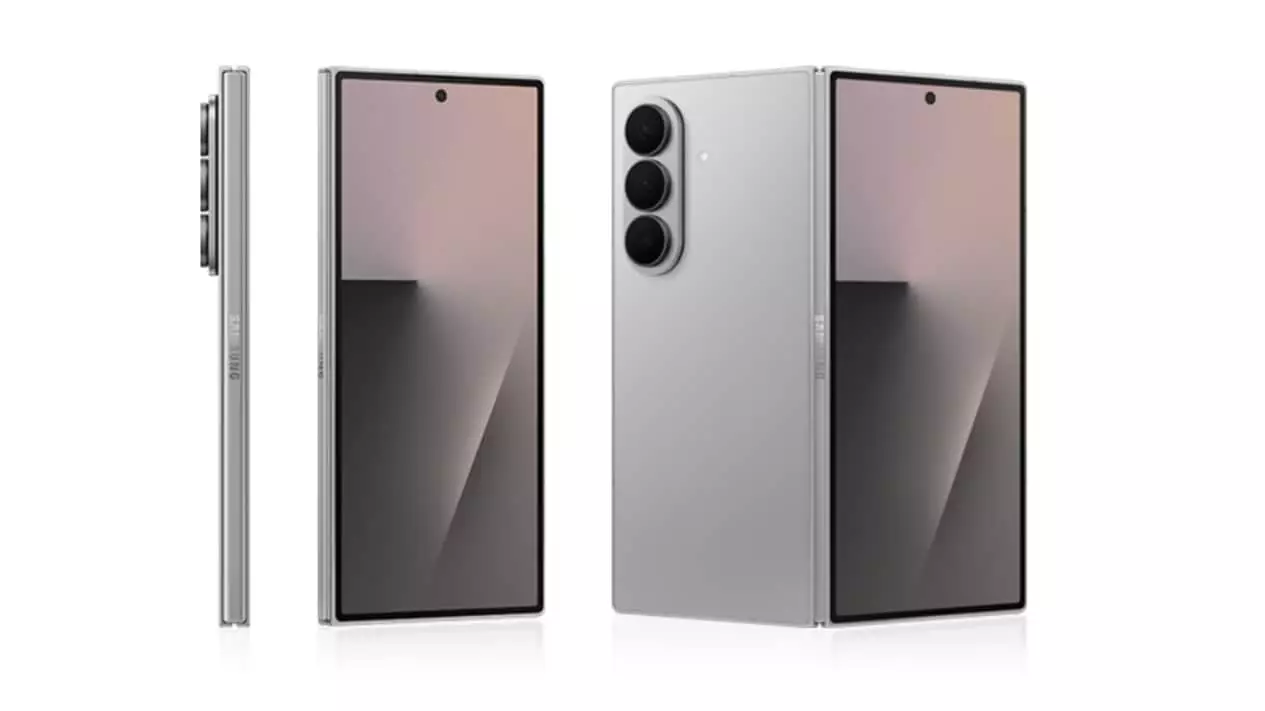For years, Samsung’s foldable lineup has been characterized by the Z Flip series’ widespread popularity, especially among younger consumers and trendsetters. The sleek, compact design of the Flip has had a near-monopoly on consumer interest, driven by its fashionable form factor and affordability. However, recent data from South Korea signals a seismic shift: the Galaxy Z Fold 7 is now capturing more pre-orders than its flip counterpart, marking a pivotal moment in the evolution of foldable phones. This isn’t merely a statistical blip—it reflects to a deeper change in consumer preferences that could reshape the entire landscape of premium smartphones.
The pre-order figures reveal a 14 percent year-over-year increase, reaching beyond one million units combined in South Korea alone. More notably, 60 percent of these pre-orders now favor the Z Fold 7, eclipsing the Flip for the first time since the foldable’s inception. This trend suggests that consumers are increasingly valuing the versatility and enhanced capabilities of book-style foldables rather than solely prioritizing compactness or fashion statement factors. The Fold’s expanding popularity indicates a desire for devices that can seamlessly function as both a phone and a tablet, broadening the appeal beyond early adopters to a wider demographic, especially in the 30s and 40s age bracket.
This change in consumer behavior also coincides with broader shifts in the smartphone industry. As technology matures, consumers are demanding more from their devices—multitasking, increased screen real estate, and enhanced productivity features. The Galaxy Z Fold 7, with its larger display and improved performance, aligns more closely with these needs. The foldable form factor is no longer seen purely as an innovative novelty but as a practical, versatile tool that fits into modern, on-the-go lifestyles. The trend underscores a move toward devices that emphasize utility over pure style, challenging the notion that foldables are primarily status symbols.
Market Dynamics and Cultural Implications
What makes this shift particularly noteworthy is its geographic and cultural context. South Korea, being a tech-savvy country with a high smartphone penetration rate, often serves as a bellwether for global trends. The fact that consumer preferences are pivoting toward the Z Fold 7 there signals that Samsung’s strategy to energize the book-style foldable segment is working. It also hints at a possible recalibration of marketing approaches, where the focus might shift from emphasizing portability or fashion to highlighting productivity, multitasking, and the device’s multitasking prowess.
While the Flip remains popular among younger or fashion-conscious users—especially women, who accounted for nearly 60 percent of Flip pre-orders—the growing dominance of the Fold signals a broader acceptance of large-screen smartphones as everyday essentials. Furthermore, with over 80 percent of Fold pre-orders being men, it also raises questions about how gender perceptions of tech devices are evolving. Are men now more inclined to see foldables as powerful productivity tools? Or is this a reflection of growing confidence in the technology’s durability and practicality?
The global market, especially in India, echoes this trend. Pre-orders for the Galaxy Z Fold 7 and Flip 7 in the country are reportedly nearly matching pre-orders for the Galaxy S25 series, illustrating that consumers elsewhere are also warming up to the concept of foldables as more than just fashionable accessories. This widespread acceptance points to a potential turning point—where foldable devices transition from niche luxury items to mainstream, essential gadgets.
This evolving consumer preference raises critical questions about the future of smartphone innovation. If large-screen foldables become the new norm, manufacturers must prioritize functionality, capacity, and user experience over superficial design elements. It also challenges skeptics who dismissed foldables as fragile or impractical, forcing the industry to rethink durability and usability. The fact that consumers are increasingly willing to pre-order, even at premium prices, underscores a shift where utility and versatility outweigh traditional notions of form factor elegance. Ultimately, the landscape of the smartphone industry appears poised for a paradigm shift—one where clarity of purpose and user-centric design will determine the winners.


Leave a Reply